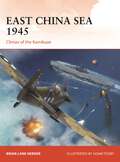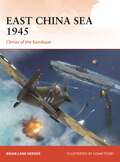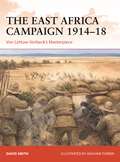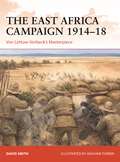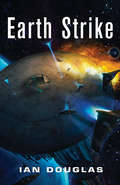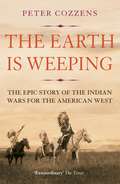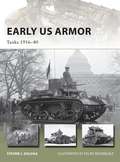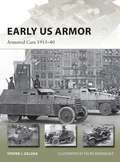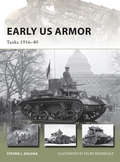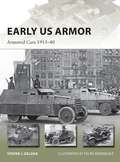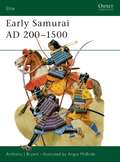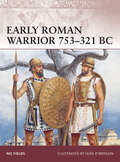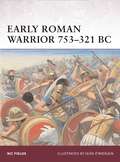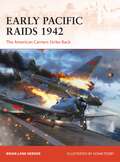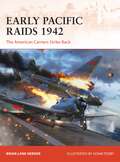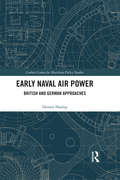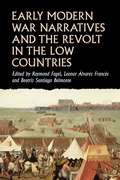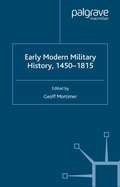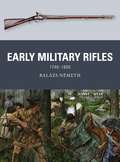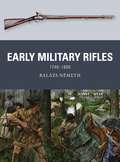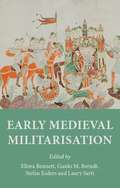- Table View
- List View
East End Angels: A heart-warming family saga about love and friendship set during the Blitz (East End Angels)
by Rosie HendryMeet The East End Angels, the newest members of Station Seventy-Five's ambulance crewStrong-willed Winnie loves being part of the crew at Station Seventy-Five but her parents are less than happy. She has managed to avoid their pleas to join the WRENS so far but when a tragedy hits too close to home she finds herself wondering if she's cut out for this life after all. Former housemaid Bella was forced to leave the place she loved when she lost it all and it's taken her a while to find somewhere else to call home. She's finally starting to build a new life but when the air raids begin, it seems she may have to start over once again.East-Ender Frankie's sense of loyalty keeps her tied to home so it's not easy for her to stay focused at work. With her head and heart pulling in different directions, will she find the strength to come through for her friends when they need her the most?Brought together at LAAS Station Seventy-Five in London's East End during 1940, these three very different women soon realise that they'll need each other if they're to get through the days ahead. But can the ties of friendship, love and family all remain unbroken?
East China Sea 1945: Climax of the Kamikaze (Campaign)
by Brian Lane HerderThis study describes the air-sea offensive supporting the ground-force invasions of Iwo Jima and Okinawa in February and April 1945, which led to the sinking of the Yamato and the onslaught of the Japanese kamikaze.During the Pacific War, the island invasions of Iwo Jima and Okinawa were the last two major ground campaigns. By the time these took place in early 1945, the US Navy had reached an exceptional level of coordination in its amphibious operations, and was able to overrun and subdue Japanese territories efficiently. Faced with the increasing might of these forces and to prevent further defeat, Imperial Japan deployed its kamikaze aircraft and attacked many US heavy aircraft carriers and destroyers; several were sunk, while others were knocked out of the war. This superbly illustrated book explores the air–sea aspects of the pivotal battles that took place, and includes the “death ride” of the Japanese battleship Yamato (the largest ever built), and the mass kamikaze attacks off Iwo Jima and Okinawa, as well as the Iwo Jima and Okinawa amphibious invasions and the naval and air bombardments of the two islands. It also considers the contribution of the USAAF and the British Pacific Fleet to the eventual victory of US air and ground forces.
East China Sea 1945: Climax of the Kamikaze (Campaign)
by Brian Lane HerderThis study describes the air-sea offensive supporting the ground-force invasions of Iwo Jima and Okinawa in February and April 1945, which led to the sinking of the Yamato and the onslaught of the Japanese kamikaze.During the Pacific War, the island invasions of Iwo Jima and Okinawa were the last two major ground campaigns. By the time these took place in early 1945, the US Navy had reached an exceptional level of coordination in its amphibious operations, and was able to overrun and subdue Japanese territories efficiently. Faced with the increasing might of these forces and to prevent further defeat, Imperial Japan deployed its kamikaze aircraft and attacked many US heavy aircraft carriers and destroyers; several were sunk, while others were knocked out of the war. This superbly illustrated book explores the air–sea aspects of the pivotal battles that took place, and includes the “death ride” of the Japanese battleship Yamato (the largest ever built), and the mass kamikaze attacks off Iwo Jima and Okinawa, as well as the Iwo Jima and Okinawa amphibious invasions and the naval and air bombardments of the two islands. It also considers the contribution of the USAAF and the British Pacific Fleet to the eventual victory of US air and ground forces.
The East Africa Campaign 1914–18: Von Lettow-Vorbeck’s Masterpiece (Campaign)
by David SmithA fascinating, beautifully illustrated study of the daring war in East Africa waged by German colonial forces under Paul von Lettow-Vorbeck against the wide array of colonial and expeditionary forces of the Allied Powers.The East African Campaign in World War I comprised a series of battles and guerrilla actions which began in German East Africa in 1914 and spread to portions of Portuguese Mozambique, northern Rhodesia, British East Africa, the Uganda Protectorate, and the Belgian Congo. German colonial forces under Lieutenant-Colonel Paul von Lettow-Vorbeck attempt to divert Allied forces from the Western Front. Despite the efforts of the Allied forces, Lettow-Vorbeck's troops remained undefeated at the end of the war.In this fascinating work, David Smith documents how a wide array of British, Indian, South African, Belgian, Portuguese and local native forces invaded German East Africa and slowly ousted the German forces, a process made tortuous by Lettow-Vorbeck's masterful management of the campaign. Among the events covered in this work are the Battle of Tanga, the scuttling of the Königsberg, the German railway campaign, and the battles at Salaita Hill, Kondoa-Irangi, Mahenge, Mahiwa and Namacurra. Colourful period and specially commissioned illustrations bring to life a wide-ranging and eventful campaign in which a high price was extracted for every inch of ground given up.
The East Africa Campaign 1914–18: Von Lettow-Vorbeck’s Masterpiece (Campaign)
by David SmithA fascinating, beautifully illustrated study of the daring war in East Africa waged by German colonial forces under Paul von Lettow-Vorbeck against the wide array of colonial and expeditionary forces of the Allied Powers.The East African Campaign in World War I comprised a series of battles and guerrilla actions which began in German East Africa in 1914 and spread to portions of Portuguese Mozambique, northern Rhodesia, British East Africa, the Uganda Protectorate, and the Belgian Congo. German colonial forces under Lieutenant-Colonel Paul von Lettow-Vorbeck attempt to divert Allied forces from the Western Front. Despite the efforts of the Allied forces, Lettow-Vorbeck's troops remained undefeated at the end of the war.In this fascinating work, David Smith documents how a wide array of British, Indian, South African, Belgian, Portuguese and local native forces invaded German East Africa and slowly ousted the German forces, a process made tortuous by Lettow-Vorbeck's masterful management of the campaign. Among the events covered in this work are the Battle of Tanga, the scuttling of the Königsberg, the German railway campaign, and the battles at Salaita Hill, Kondoa-Irangi, Mahenge, Mahiwa and Namacurra. Colourful period and specially commissioned illustrations bring to life a wide-ranging and eventful campaign in which a high price was extracted for every inch of ground given up.
Earth Strike: Star Carrier: Book One (Star Carrier #1)
by Ian DouglasThe first book in the epic saga of humankind's war of transcendence
The Earth is Weeping: The Epic Story of the Indian Wars for the American West
by Peter CozzensSunday Times' Best History Books of 2017Winner of the Gilder Lehrman Prize for Military HistoryWinner of the 2017 Caroline Bancroft History PrizeShortlisted for the Military History Magazine Book of the Year AwardNOMINATED FOR THE 2017 PEN HESSELL-TILTMAN'Extraordinary... Cozzens has stripped the myth from these stories, but he is such a superb writer that what remains is exquisite' The TimesIn a sweeping narrative, Peter Cozzens tells the gripping story of the wars that destroyed native ways of life as the American nation continued its expansion onto tribal lands after the Civil War, setting off a conflict that would last nearly three decades.By using original research and first-hand sources from both sides, Cozzens illuminates the encroachment experienced by the tribes and the tribal conflicts over whether to fight or make peace, and explores the squalid lives of soldiers posted to the frontier and the ethical quandaries faced by generals who often sympathized with their native enemies. Bringing together a cast of fascinating characters, including Custer, Sherman, Grant and a host of other military and political figures, as well as great native leaders such as Crazy Horse, Sitting Bull, Geronimo and Red Cloud, The Earth is Weeping is the fullest account to date of how the West was won... and lost.
Early US Armor: Tanks 1916–40 (New Vanguard)
by Steven J. Zaloga Felipe RodríguezBetween the two World Wars, the US contributed significantly to the development of the tank, a weapon invented by the British and the French seeking a way to break through the lines of German trenches. From the employment of the French Renault FT and British Mark V during their involvement in World War I, the US branched out with their own indigenous designs including the M1 Cavalry Car and the M2 Light and Medium tanks, the precursors to the Stuart and Grant tanks of World War II. Tank designers in this period faced unique challenges and so the story of early American armour is littered with failures amongst the successes. Featuring previously unpublished photos and fully illustrated throughout, Early American Armor (1): Tanks 1916–40 is essential reading for anyone interested in American armour, or in the development of tank design.
Early US Armor: Armored Cars 1915–40 (New Vanguard #254)
by Steven J. Zaloga Felipe RodríguezThe first American armoured cars began to emerge around the turn of the century, seeing their first military use in 1916 during the Punitive Expedition against Pancho Villa. When the United States entered World War I, the American Expeditionary Forces used some armoured cars in France, and American armoured cars were used by the French Army. The inter-war years saw considerable innovation and experimentation in armoured car design. Of the 1930s scout car designs, the M3A1 scout car was good enough to be produced in very large numbers in World War II, and was widely exported to many other armies via Lend-Lease. It also served as the basis for the late M2 and M3 armoured half-tracks. In this study, using detailed full colour plates and rigorous analysis, US armour expert Steven J. Zaloga chronicles the development of the US armoured car in the years leading up to World War II.
Early US Armor: Tanks 1916–40 (New Vanguard)
by Steven J. Zaloga Felipe RodríguezBetween the two World Wars, the US contributed significantly to the development of the tank, a weapon invented by the British and the French seeking a way to break through the lines of German trenches. From the employment of the French Renault FT and British Mark V during their involvement in World War I, the US branched out with their own indigenous designs including the M1 Cavalry Car and the M2 Light and Medium tanks, the precursors to the Stuart and Grant tanks of World War II. Tank designers in this period faced unique challenges and so the story of early American armour is littered with failures amongst the successes. Featuring previously unpublished photos and fully illustrated throughout, Early American Armor (1): Tanks 1916–40 is essential reading for anyone interested in American armour, or in the development of tank design.
Early US Armor: Armored Cars 1915–40 (New Vanguard #245)
by Steven J. Zaloga Mr Felipe RodríguezThe first American armoured cars began to emerge around the turn of the century, seeing their first military use in 1916 during the Punitive Expedition against Pancho Villa. When the United States entered World War I, the American Expeditionary Forces used some armoured cars in France, and American armoured cars were used by the French Army. The inter-war years saw considerable innovation and experimentation in armoured car design. Of the 1930s scout car designs, the M3A1 scout car was good enough to be produced in very large numbers in World War II, and was widely exported to many other armies via Lend-Lease. It also served as the basis for the late M2 and M3 armoured half-tracks. In this study, using detailed full colour plates and rigorous analysis, US armour expert Steven J. Zaloga chronicles the development of the US armoured car in the years leading up to World War II.
Early Samurai AD 200–1500 (Elite #35)
by Angus McBride Anthony J BryantWar played a central part in the history of Japan. Warring clans controlled much of the country. The wars were usually about land, the struggle for control of which eventually gave rise to perhaps the most formidable warriors of all time: the Samurai. Ancient Yayoi warriors developed weapons, armour and a code during the ensuing centuries that became the centrepiece for the Japanese Samurai. Anthony Bryant chronicles the history, arms and armour of these truly élite warriors, from the rise of the Yayoi through the Genpei War between the Minamoto and Taira clans to the Mongol invasions of the 13th century.
Early Samurai AD 200–1500 (Elite #35)
by Angus McBride Anthony J BryantWar played a central part in the history of Japan. Warring clans controlled much of the country. The wars were usually about land, the struggle for control of which eventually gave rise to perhaps the most formidable warriors of all time: the Samurai. Ancient Yayoi warriors developed weapons, armour and a code during the ensuing centuries that became the centrepiece for the Japanese Samurai. Anthony Bryant chronicles the history, arms and armour of these truly élite warriors, from the rise of the Yayoi through the Genpei War between the Minamoto and Taira clans to the Mongol invasions of the 13th century.
Early Roman Warrior 753–321 BC (Warrior #156)
by Nic FieldsThe prototypical 'Roman Legionnaire' often seen on television and in movies is actually the product of nearly a millennium of military development. Far back in the Bronze Age, before the city of Rome existed, a loose collection of independent hamlets eventually formed into a village. From this base, the earliest Roman warriors launched cattle raids and ambushes against their enemies. At some point during this time, the Romans began a period of expansion, conquering land and absorbing peoples. Soon, they had adopted classical Greek fighting methods with militia forming in phalanxes. This book covers the evolution of the earliest Roman warriors and their development into an army that would eventually conquer the known world.
Early Roman Warrior 753–321 BC (Warrior)
by Nic Fields Seán Ó’BrógáinThe prototypical 'Roman Legionnaire' often seen on television and in movies is actually the product of nearly a millennium of military development. Far back in the Bronze Age, before the city of Rome existed, a loose collection of independent hamlets eventually formed into a village. From this base, the earliest Roman warriors launched cattle raids and ambushes against their enemies. At some point during this time, the Romans began a period of expansion, conquering land and absorbing peoples. Soon, they had adopted classical Greek fighting methods with militia forming in phalanxes. This book covers the evolution of the earliest Roman warriors and their development into an army that would eventually conquer the known world.
Early Pacific Raids 1942: The American Carriers Strike Back (Campaign)
by Brian Lane HerderA fascinating exploration of how between February 1 and March 10, 1942, three small US task forces launched several unexpected raids across the Japanese defensive perimeter in the Central and South Pacific. After the devastating Japanese blows of December 1941, the Allies found themselves reeling with defeat everywhere in the Pacific. Although stripped of his battleships and outnumbered 10:3 in carriers, the US Navy commander-in-chief Admiral Ernest J. King decided to hit back at Japan's rapidly expanding Pacific empire immediately, in an effort to keep the Japanese off-balance. On February 1, 1942, Vice Admiral Bill Halsey led the US Pacific Fleet carriers on their first raid, using high-speed hit-and-run tactics to strike at the Japanese, at a time when most of the Japanese carrier fleet was in the Indian Ocean. Halsey's aggressive commitment inspired its American participants to invent the mythical “Haul Ass With Halsey” club. The last of the 1942 US carrier raids in March 1942 would form a defining moment in the Pacific War, prior to a new phase of high-seas battles between the opposing fleets.This superbly illustrated book documents for the first time in a single volume this little-known but important World War II naval campaign. The fabulous illustrations, including maps and colour artworks, bring to life the US air and naval raids on the Japanese bases in the Marshall and Gilbert Islands, Rabaul, Wake Island, Marcus Island, and Lae and Salamaua in northern New Guinea.
Early Pacific Raids 1942: The American Carriers Strike Back (Campaign #392)
by Brian Lane HerderA fascinating exploration of how between February 1 and March 10, 1942, three small US task forces launched several unexpected raids across the Japanese defensive perimeter in the Central and South Pacific. After the devastating Japanese blows of December 1941, the Allies found themselves reeling with defeat everywhere in the Pacific. Although stripped of his battleships and outnumbered 10:3 in carriers, the US Navy commander-in-chief Admiral Ernest J. King decided to hit back at Japan's rapidly expanding Pacific empire immediately, in an effort to keep the Japanese off-balance. On February 1, 1942, Vice Admiral Bill Halsey led the US Pacific Fleet carriers on their first raid, using high-speed hit-and-run tactics to strike at the Japanese, at a time when most of the Japanese carrier fleet was in the Indian Ocean. Halsey's aggressive commitment inspired its American participants to invent the mythical “Haul Ass With Halsey” club. The last of the 1942 US carrier raids in March 1942 would form a defining moment in the Pacific War, prior to a new phase of high-seas battles between the opposing fleets.This superbly illustrated book documents for the first time in a single volume this little-known but important World War II naval campaign. The fabulous illustrations, including maps and colour artworks, bring to life the US air and naval raids on the Japanese bases in the Marshall and Gilbert Islands, Rabaul, Wake Island, Marcus Island, and Lae and Salamaua in northern New Guinea.
Early Naval Air Power: British and German Approaches (Corbett Centre for Maritime Policy Studies Series)
by Dennis HaslopThis book examines the British and German approach to naval air power, describing the creation and development of the two naval air service organizations and doctrine. This work provides new insights as to how two naval air services were influenced by internal and political interventions, and how each was integrated into the organizational structures of the Royal Navy and the Kaiserlichemarine (KM). Both the Admiralty and the KM made substantial alterations to their organizations and doctrine in the process. Principal air doctrines employed are examined chronologically and the application of operational doctrine is described. While they adopted similar air doctrines, there were differences in operational doctrine, which they addressed according to their different requirements. This book is a comparative study about the development of organization and air power doctrine in the RNAS (Royal Naval Air Service) and the IGNAS (Imperial German Naval Air Service). It investigates public and political interventions and early concepts of air power, placing into context the factors which contributed to how naval theorists came to think about the best means of controlling its working medium, air space. Ultimately, it examines the similarities, and differences, between the RNAS and IGNAS understanding of naval air power, within the broader strategic and theoretical framework of their parent organizations. This book will be of great interest to students of air power, naval power, military history, strategic studies and IR in general.
Early Naval Air Power: British and German Approaches (Corbett Centre for Maritime Policy Studies Series)
by Dennis HaslopThis book examines the British and German approach to naval air power, describing the creation and development of the two naval air service organizations and doctrine. This work provides new insights as to how two naval air services were influenced by internal and political interventions, and how each was integrated into the organizational structures of the Royal Navy and the Kaiserlichemarine (KM). Both the Admiralty and the KM made substantial alterations to their organizations and doctrine in the process. Principal air doctrines employed are examined chronologically and the application of operational doctrine is described. While they adopted similar air doctrines, there were differences in operational doctrine, which they addressed according to their different requirements. This book is a comparative study about the development of organization and air power doctrine in the RNAS (Royal Naval Air Service) and the IGNAS (Imperial German Naval Air Service). It investigates public and political interventions and early concepts of air power, placing into context the factors which contributed to how naval theorists came to think about the best means of controlling its working medium, air space. Ultimately, it examines the similarities, and differences, between the RNAS and IGNAS understanding of naval air power, within the broader strategic and theoretical framework of their parent organizations. This book will be of great interest to students of air power, naval power, military history, strategic studies and IR in general.
Early modern war narratives and the Revolt in the Low Countries (Studies in Early Modern European History)
by Raymond Fagel Leonor Álvarez Francés Beatriz Santiago BelmonteBy the end of the sixteenth century, stories about the Revolt in the Low Countries (c. 1567–1648) had begun to spread throughout Europe. These stories had very different authors with very different intentions. Over time the plethora of sources and interpretations faded away, leaving us with opposing canonical narratives. The Dutch and Spanish national myths were forged on the basis of two visions of the conflict: as a liberation war against cruel Spanish oppressors and as a glorious episode in the history of the Spanish Empire. This volume delves into the early, seemingly anecdotal stories of the war to map the great variety and interconnection of the narratives. It asks such questions as how did the Jesuits write about the Revolt, what can we find in Italian chronicles and how did the war look from the perspective of a local nobleman or a Spanish commander?
Early modern war narratives and the Revolt in the Low Countries (Studies in Early Modern European History)
by William G. Naphy Raymond Fagel Leonor Álvarez Francés Beatriz Santiago BelmonteBy the end of the sixteenth century, stories about the Revolt in the Low Countries (c. 1567–1648) had begun to spread throughout Europe. These stories had very different authors with very different intentions. Over time the plethora of sources and interpretations faded away, leaving us with opposing canonical narratives. The Dutch and Spanish national myths were forged on the basis of two visions of the conflict: as a liberation war against cruel Spanish oppressors and as a glorious episode in the history of the Spanish Empire. This volume delves into the early, seemingly anecdotal stories of the war to map the great variety and interconnection of the narratives. It asks such questions as how did the Jesuits write about the Revolt, what can we find in Italian chronicles and how did the war look from the perspective of a local nobleman or a Spanish commander?
Early Modern Military History, 1450-1815
by G. MortimerKey military developments occurred in the Early Modern period, during which armies evolved from troops of medieval knights to Napoleon's mass levies. Firearms impelled change, necessitating new battlefield tactics and fundamentally altering siege and naval warfare. The size and cost of military forces expanded enormously, and new standing armies underpinned the growing absolutist power of princes. Academic experts from both sides of the Atlantic review these developments, discussing the medieval legacy, Spain, the Ottoman Turks, the Thirty Years War, Prussia, the ancien régime and the Napoleonic Wars, together with sea power, the American Revolution and warfare outside the West.
Early Military Rifles: 1740–1850 (Weapon)
by Balázs NémethThe conduct of combat operations in open order during the 18th and 19th centuries required an improved firearm with more accuracy than the standard-issue smoothbore infantry musket. Consequently, the appearance of a new type of regular light infantry soldier and an innovative military firearm, the rifle, marked a new age in the history of warfare. During the 18th century both Austria and Prussia fielded light troops armed with rifled firearms, while conflicts in North America involved the deadly long rifle and the innovative Ferguson breech-loader. Rifle-armed specialists also fought for several nations during the Napoleonic Wars. However, it was the decades after 1815 that saw the appearance of successful rifled percussion firearms, paving the way for the widespread issue of rifled weapons. This development was accelerated by the Prussian adoption of the Dreyse 'needle gun' in 1848 and in 1849, the French Minié rifle was the first successful conical ball rifle concept to be issued to regular troops in large numbers. Illustrated throughout with stunning full-colour artwork, this study charts the development, combat use, influence and legacy of rifled firearms in a host of conflicts, from the War of the Austrian Succession of 1740–48 to the Mexican–American War of 1846–48.
Early Military Rifles: 1740–1850 (Weapon #76)
by Balázs NémethThe conduct of combat operations in open order during the 18th and 19th centuries required an improved firearm with more accuracy than the standard-issue smoothbore infantry musket. Consequently, the appearance of a new type of regular light infantry soldier and an innovative military firearm, the rifle, marked a new age in the history of warfare. During the 18th century both Austria and Prussia fielded light troops armed with rifled firearms, while conflicts in North America involved the deadly long rifle and the innovative Ferguson breech-loader. Rifle-armed specialists also fought for several nations during the Napoleonic Wars. However, it was the decades after 1815 that saw the appearance of successful rifled percussion firearms, paving the way for the widespread issue of rifled weapons. This development was accelerated by the Prussian adoption of the Dreyse 'needle gun' in 1848 and in 1849, the French Minié rifle was the first successful conical ball rifle concept to be issued to regular troops in large numbers. Illustrated throughout with stunning full-colour artwork, this study charts the development, combat use, influence and legacy of rifled firearms in a host of conflicts, from the War of the Austrian Succession of 1740–48 to the Mexican–American War of 1846–48.
Early medieval militarisation
by Ellora Bennett Guido M. Berndt Stefan Esders Laury SartiThe societies of ancient Europe underwent a continual process of militarisation, and this would come to be a defining characteristic of the early Middle Ages. The process was neither linear nor mono-causal, but it affected society as a whole, encompassing features like the lack of demarcation between the military and civil spheres of the population, the significance attributed to weapons beyond their military function and the wide recognition of martial values. Early medieval militarisation assembles twenty studies that use both written and archaeological evidence to explore the phenomenon of militarisation and its impact on the development of the societies of early medieval Europe. The interdisciplinary investigations break new ground and will be essential reading for scholars and students of related fields, as well as non-specialists with an interest in early medieval history.

